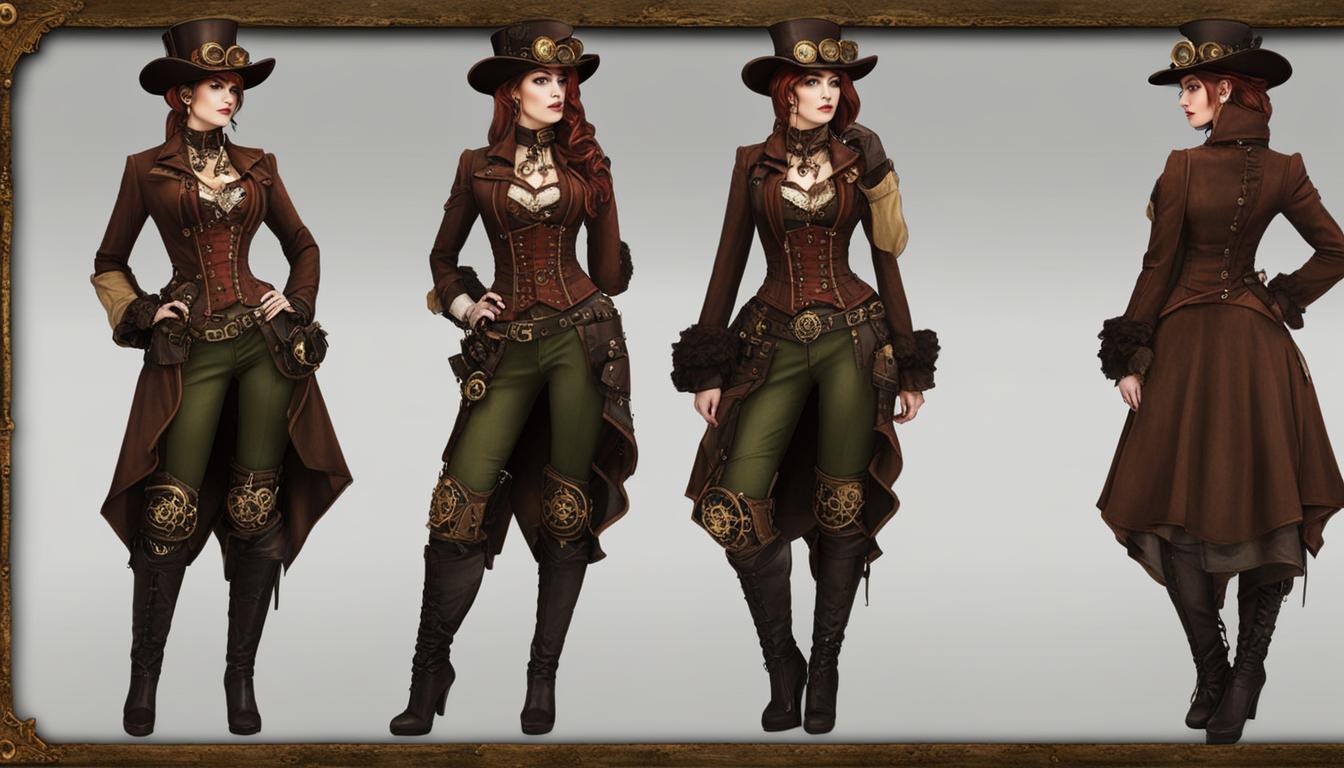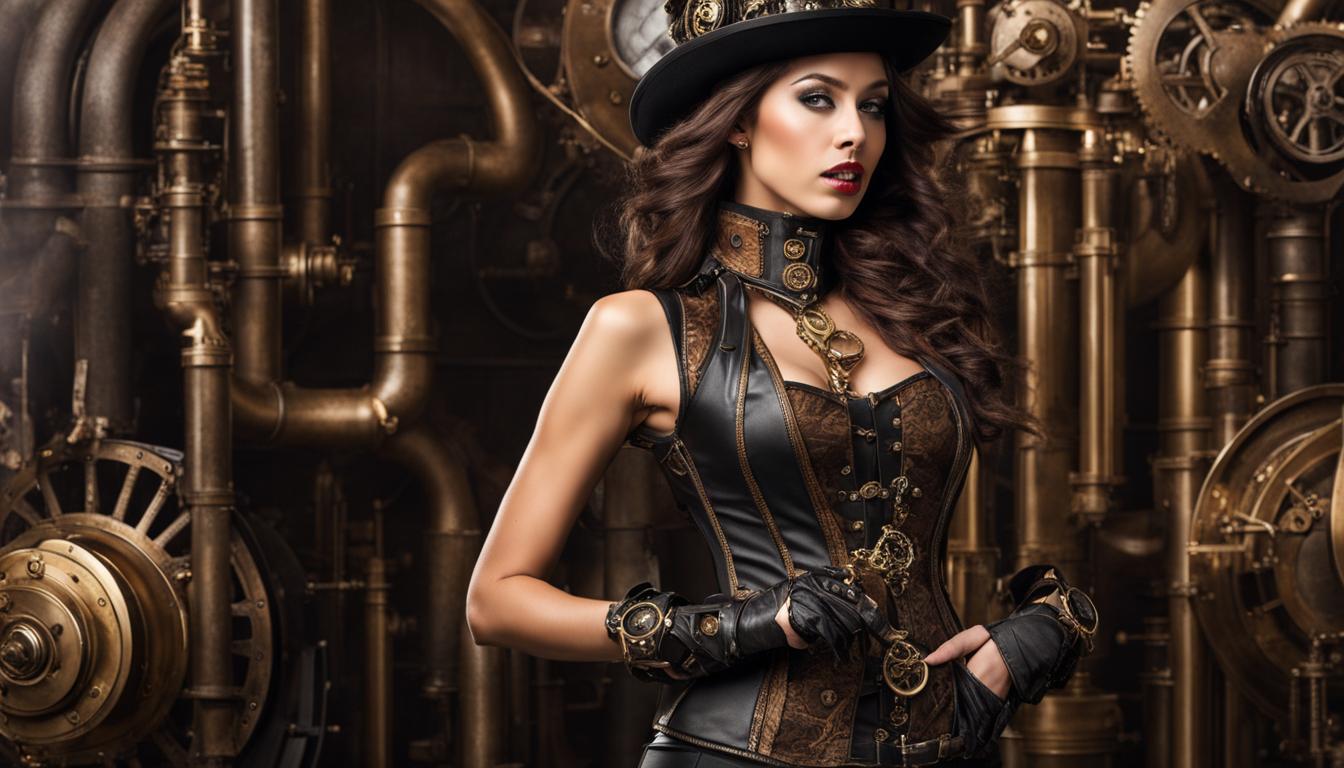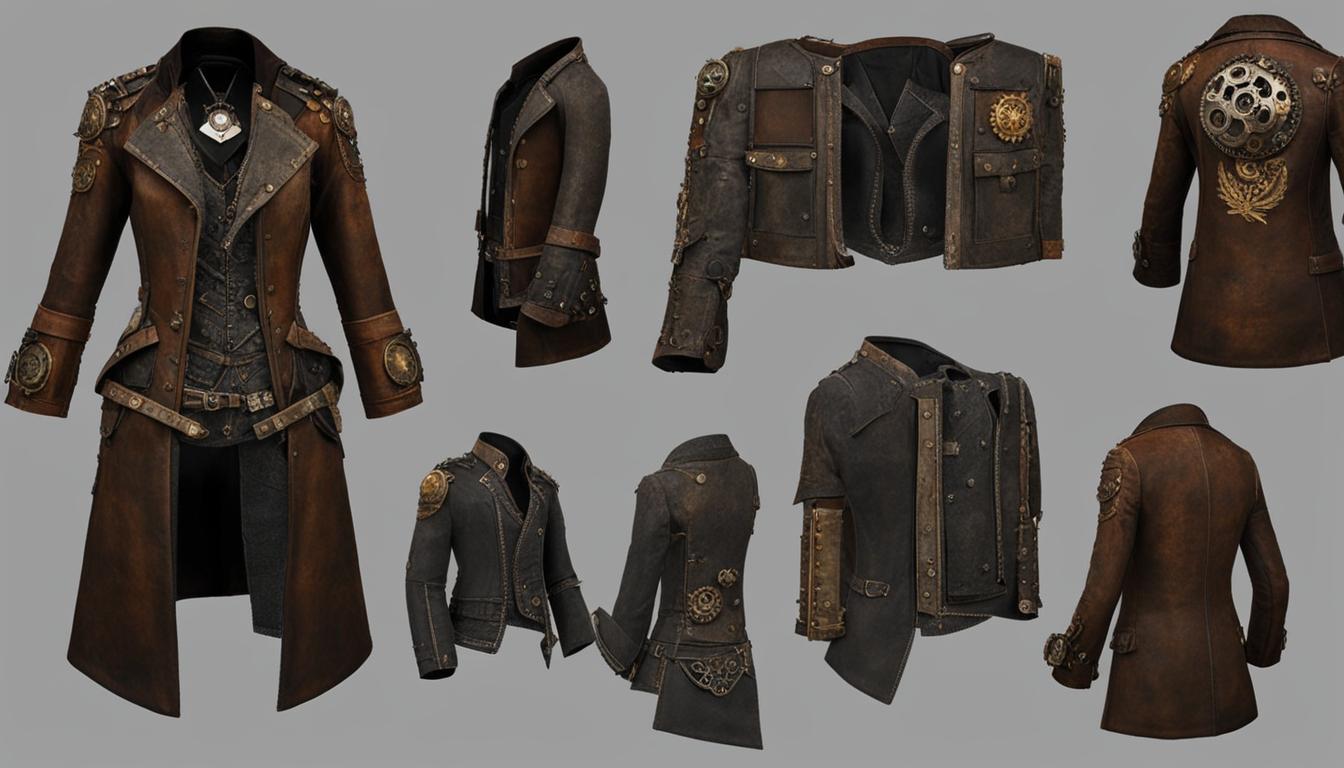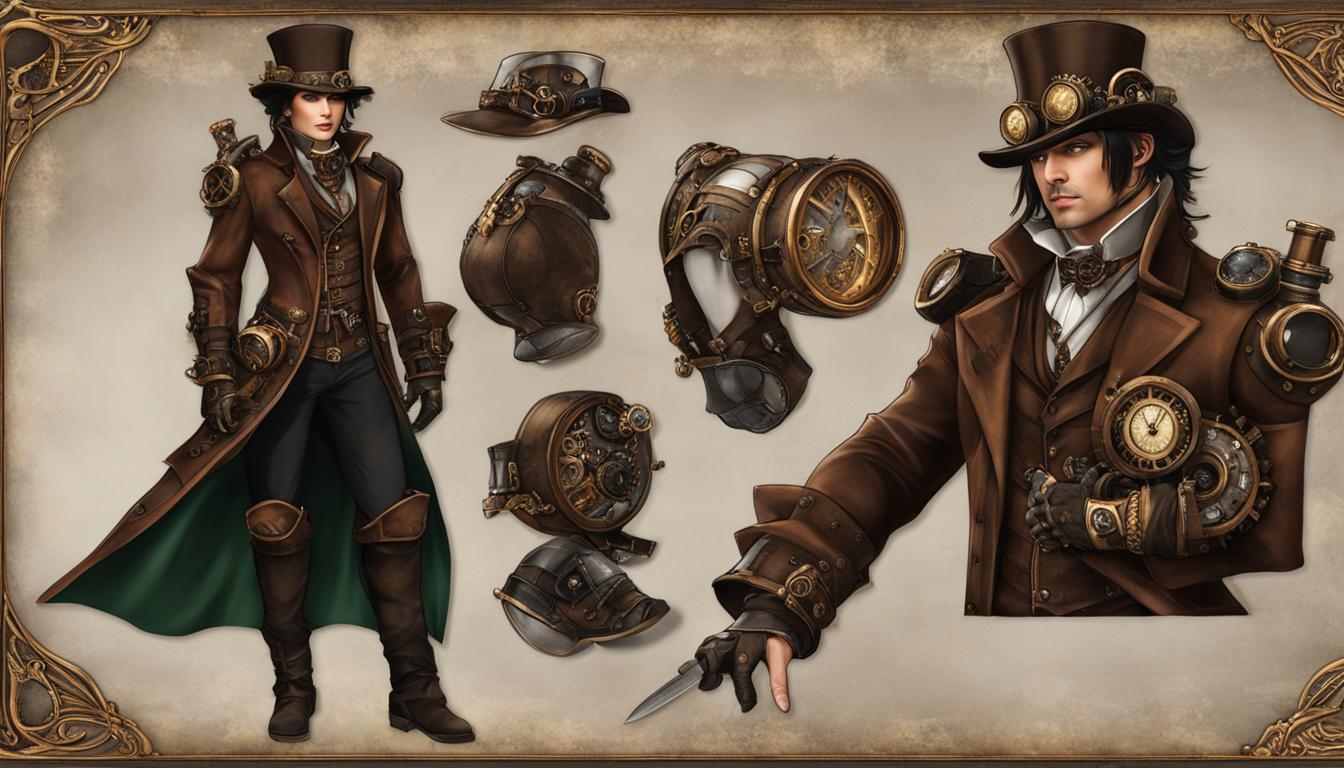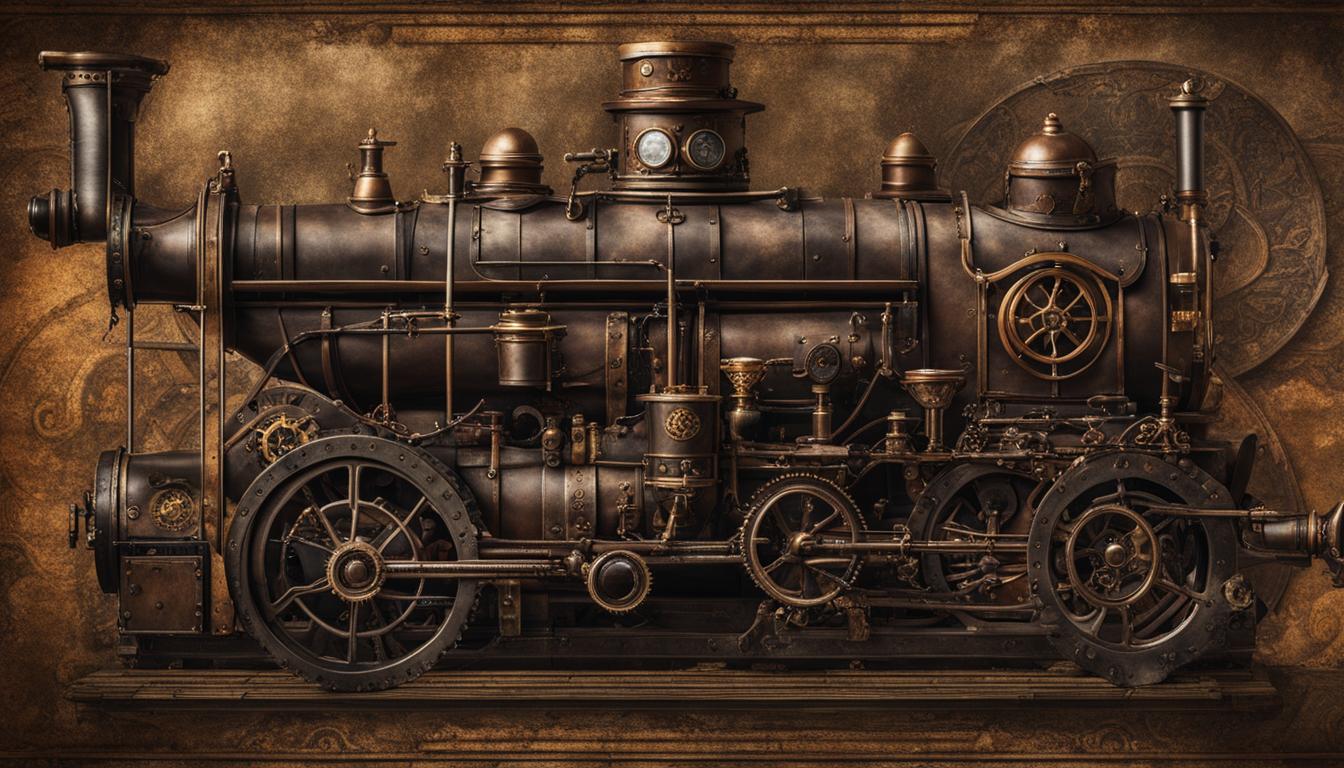Steampunk, a genre that combines Victorian machinery with speculative sci-fi, captivates with its unique aesthetic. One of the defining features of steampunk is its distinct color palette, which sets it apart from other styles. From the earthy tones of brown to the metallic sheen of brass and copper, the colors used in steampunk fashion and imagery help create a visually captivating experience.
When it comes to the color scheme of steampunk clothing, brown takes center stage. This color represents the industrial revolution and the earthy hues of the Victorian era. Different shades of brown, ranging from lighter sepia tones to deeper mahogany hues, dominate the scene. Black and deep shades of red or blue often complement the brown, adding highlights and creating contrast.
Metallic colors, such as brass, copper, and iron, also play a significant role in steampunk imagery. These colors reflect the technological advancements and industrial aspects that inspire the genre. Imagine the gleam of polished brass gears and the rustic charm of copper pipes, and you’ll have a sense of the metallic hues that are commonly seen in steampunk fashion.
As steampunk has evolved, variations within the genre have introduced more vibrant colors. Bright primary colors like red, blue, and yellow, as well as secondary colors like orange, green, and purple, have found their way into steampunk attire. These vivid hues break up the monotony of the traditional color scheme, adding a fresh and exciting element to the genre.
Key Takeaways:
- The color palette of steampunk clothing is primarily centered around shades of brown.
- Black, deep shades of red or blue, and metallic colors like brass and copper are commonly used as highlights and accents.
- Brown evokes the industrial revolution and the Victorian era, while metallic colors reflect the technological advancements that inspire steampunk.
- Steampunk fashion incorporates bold contrasts, bright primary colors, and even secondary colors like orange, green, and purple to add vibrancy to the genre.
- The evolving nature of steampunk has introduced more varied and vibrant colors, breaking away from the traditional brownish palette.
Choosing the Perfect Colors for Your Steampunk Attire
Steampunk fashion is all about embracing a unique aesthetic that combines Victorian machinery and speculative sci-fi. When it comes to choosing colors for your steampunk attire, it’s important to consider the genre’s distinct color palette. Classic steampunk fashion often revolves around various shades of brown, complemented by black or deep shades of red or blue. These colors evoke the industrial aspects and earthy tones of the Victorian era, adding a touch of authenticity to your ensemble.
However, don’t be afraid to mix it up and experiment with bold color choices. Bright primary colors like crimson and royal blue can add a regal and eye-catching touch to your steampunk attire. Additionally, consider incorporating metallic colors such as brass, copper, and iron to represent the technological advancements of the time. These colors can be used in accessories, trims, or even as accents in your overall look.
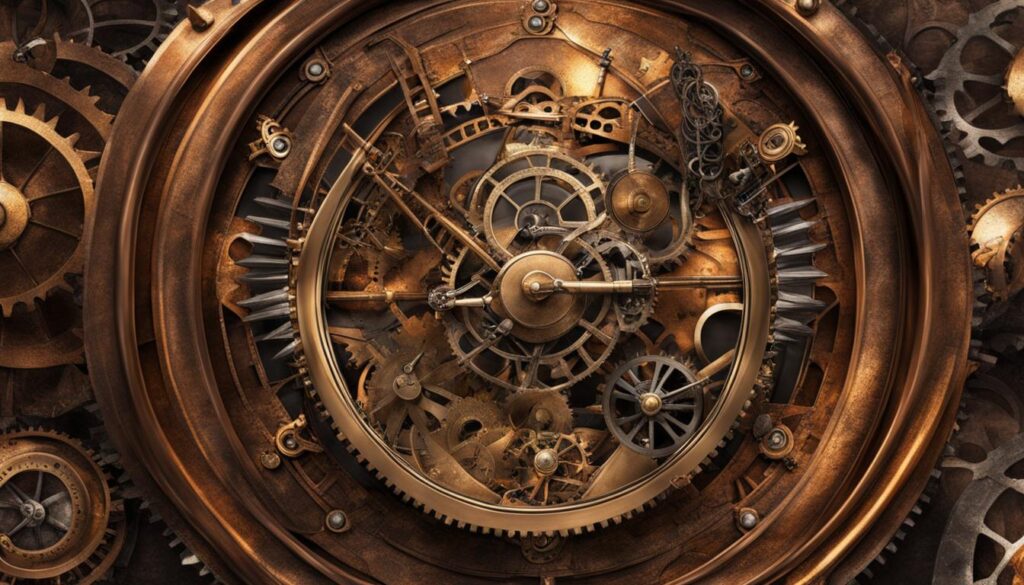
Remember, steampunk fashion is all about creativity and self-expression. While the traditional color palette is a great starting point, don’t be afraid to venture into more vibrant and varied colors if it aligns with your personal style. Whether you prefer a classic brownish palette or want to explore a bolder color scheme, the key is to have fun and create a look that truly embodies the essence of steampunk.
How Steampunk Uses Color in Fashion and Imagery
Color is a vital element in expressing the unique themes and ideas of steampunk, both as a genre and as a style. Steampunk’s industrial and retro-futuristic nature is reflected in its carefully curated color palette, with brown taking center stage as the most common color used. This earthy hue evokes imagery of steam engines, rust, and wood, perfectly encapsulating the essence of the Victorian era. In addition to brown, metallic colors such as copper, brass, and steel are prevalent in steampunk fashion and imagery, symbolizing the technological advancements of the time.
Steampunk employs color in various ways to enhance its overall aesthetic. Different shades of brown are used to create depth and richness, while bold accents and contrasts are introduced through the inclusion of brighter primary colors. These vibrant hues serve to highlight and accentuate the rest of the steampunk look. Alternatively, darker color palettes can be utilized to create a more sinister and Gothic atmosphere, adding a touch of mystery to the style.
Steampunk style is all about finding the perfect balance between vintage, industrial elements and futuristic design. The careful selection and coordination of colors play a key role in achieving this harmonious blend.
As steampunk has evolved, its color palette has expanded to incorporate a wider range of hues. While the classic brownish palette remains iconic, there are now variations that introduce more vibrant and varied colors into the mix. These new interpretations of steampunk color palettes inject freshness and diversity into the genre, allowing for endless possibilities in fashion and imagery.
The Role of Color in Steampunk Fashion
Color plays a crucial role in shaping the overall aesthetic of steampunk fashion. It helps to define the various elements of a steampunk outfit and create a cohesive look. Here are some key ways in which color is utilized in steampunk fashion:
- Highlighting Details: Bright colors are often used to draw attention to specific design elements or accessories, such as the vibrant red trim on a leather jacket or the striking blue gears on a hat.
- Contrasting Accents: Steampunk fashion embraces contrasts, and color is leveraged to create visually dynamic outfits. For example, a predominantly brown ensemble can be elevated with the addition of a bold green waistcoat or a deep purple corset.
- Mood and Atmosphere: Colors can evoke specific moods or atmospheres in steampunk fashion. Darker, more somber tones contribute to a mysterious and brooding aesthetic, while brighter, warmer colors can convey a more optimistic and adventurous vibe.
By skillfully selecting and coordinating colors, steampunk enthusiasts can achieve a truly captivating and visually engaging style that reflects the essence of this unique genre.
Exploring Steampunk Color Palettes from Online Sources
Steampunk enthusiasts looking for inspiration can find a treasure trove of color palettes from various online sources. These platforms offer a wide range of images, color themes, and design projects that can be used to create unique and visually captivating steampunk wardrobes.
One such platform is Flickr, which allows users to filter images by predominant color. A quick search reveals that dark orange, which is essentially a shade of brown, is the most common color in steampunk imagery. Pale pink and blue also make appearances, providing alternative hues to explore in steampunk attire.
Adobe Color is another valuable resource for discovering steampunk color inspiration. The platform showcases color themes from user uploads and design projects on Behance, as well as themes extracted from steampunk images on Adobe Stock. These themes often feature shades of brown, yellow, orange, and red, with occasional introductions of blues and greens. They provide an excellent starting point for building captivating steampunk color palettes.
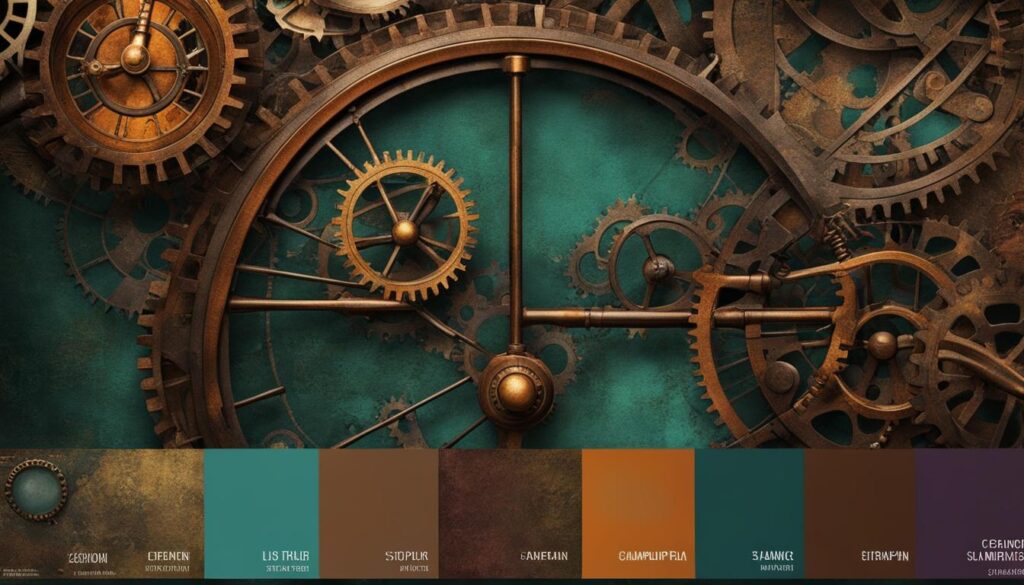
Table: Steampunk Color Palettes from Online Sources
| Platform | Common Colors | Additional Hues |
|---|---|---|
| Flickr | Dark orange (brown) | Pale pink, blue |
| Adobe Color | Brown, yellow, orange, red | Blue, green (occasionally) |
These online sources are a treasure trove of inspiration for steampunk enthusiasts, providing a wide range of color palettes from which to draw. Whether embracing the traditional brown palette or exploring more vibrant and varied hues, there’s no shortage of ideas to help create stunning and unique steampunk wardrobes.
Conclusion
Steampunk, with its distinct and recognizable color palette, captivates with its unique blend of Victorian machinery and speculative sci-fi. The most common color in steampunk fashion and imagery is brown, symbolizing the industrial revolution and the earthy tones of the Victorian era. Complemented by metallic hues like brass, copper, and iron, the color palette showcases the technological advancements that inspire the genre.
Steampunk fashion embraces a diverse range of materials and colors to create a visually appealing style. While brown dominates the palette, bold primary colors and striking contrasts can be used to add flair and make steampunk attire stand out. The genre has evolved to introduce more vibrant tones, breaking away from the traditional color scheme and adding a fresh element to the aesthetic.
Whether one chooses to embrace the classic brownish palette or explore more colorful options, steampunk remains a fascinating genre with its distinctive color palette. The style and color matching of steampunk offer endless possibilities for creating visually captivating looks that pay homage to the industrial past and the futuristic vision that defines this unique genre.
FAQ
What colors are commonly used in steampunk fashion?
The most common colors used in steampunk fashion are various shades of brown, accompanied by black or deep shades of red or blue. Metallic colors like brass, copper, and iron are also frequently used.
What materials are commonly used in steampunk fashion?
Steampunk fashion often incorporates materials like leather and metal. These materials are chosen for their industrial and retro-futuristic aesthetic.
Can I use bright colors in steampunk fashion?
Yes, bright colors can be used in steampunk fashion to add bold accents and create contrasts. Bright primary colors like crimson and royal blue are popular choices for adding a regal touch to steampunk attire.
Are there any other colors besides brown commonly used in steampunk fashion?
While brown is the most common color in steampunk fashion, variations of the genre have introduced more vibrant tones. These can include primary colors like red, blue, and yellow, as well as secondary colors like orange, green, and purple.
Where can I find inspiration for steampunk color palettes?
Online sources like Flickr and Adobe Color offer a wealth of inspiration for steampunk color palettes. These websites provide a wide range of images and color themes uploaded by users, allowing you to create unique and aesthetically pleasing steampunk palettes.

